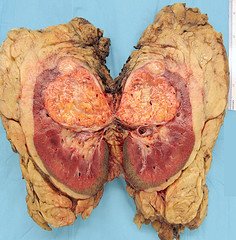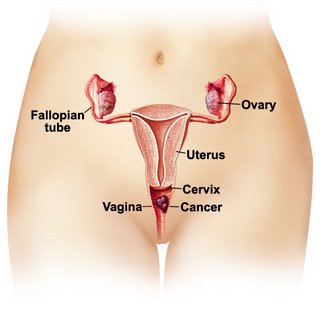Heath Ledger and Brokebock Mountain are names that ring a hell for many people
 His legacy
His legacyOne to be remembered: Father of Angiogenesis, Dr Judah Folkman -1933 to 2008.
HEATH Ledger and Brokebock Mountain are names that ring a hell for many people who have been following the recent entertainment news.
Few would recognise, much less have heard of, Dr Judah Folkman.
Though both men died in the same month (January 2008) each event received a different level of publicity.
Quite often, for people who work hard behind the scenes, it takes a substantial amount of effort to be reeognised. Dr Folkman, a cancer treatment revolutionist, was one that contributed his greatest to mankind but remains unfamiliar to the majority of the six billion people on earth.
Dr Folkman was the founder and director of the vascular biology programme at the Children's Hospital in Boston and a professor of paediattic surgery and cell biology at Harvard Medical School, also in Boston.
He was very passionate about his work and many have said they were not surprised to hear that Folkman, 74, was working till the very end. He collapsed at the Denver International Airport on his way to a speaking engagement in Vancouver.
His departure is indeed a great lost not only to his family, but the world at large. Dr Folkman is sur-vived by his wife, Paula, with whom he lived in Brookline, Massachusetts, two daughters and a granddaughter (Hannah).
The early days
Born in Cleveland in 1933, Moses judah Folkman was the son of a rabbi. He had a brother and a sister and, as a boy, started making house calls to the sick with his father.
He began his medical career in high school in Bexley, Ohio, volunteering in a hospital laboratory at Ohio State University. This early calling led Dr Folkman to Ohio State University, where, by the end of his freshman year, he was performing surgery on dogs under the mentorship of Dr Robert Zollinger, then president of the American College of Surgeons.
The young Dr Folkman even designed a device to cool the liver during surgery without causing organ damage and then, he became coauthor on his first academic paper.
With this extraordinary achievement, he was accepted into Harvard Medical School at the age of 19. After graduating in 1957, Dr Folkman began his surgical residency at the Massachusetts General Hospital and served as chief resi-dent in surgery from 1964 to 1965.
Discovery of Angiogenesis Theory
In the midst of his residency at Massachusetts General Hospital, Dr Folkman was suddenly drafted into the Navy, assigned to do research on artificial blood at a facility in Bethesda, Maryland.
The assigned work was finished far earlier than expected, so Dr Folkman and a colleague, pathologist Fred Becker, had free time in the laboratory and decided to study tumour cells growiug in a special apparatus.
Dr Folkman saw something unusual when their black melanoma cells only grew briefly. All the little tumours were exactly
the same size. He knew that this wasn't natural and something must have halted their growth at a maximum size.
That initial observation led to years of experimenting, thinking, arguing, and exploring until he concluded that the tumours had all stopped growing because they couldn't get enough blood.
As this research continued, Dr Folkman returned to his internship at Massachusetts General Hospital, and then began work at Boston City Hospital as a young surgeon.
In 1967, when he was only 34, Dr Folkman was recruited to become chief of surgery at Children's Hospital. While serving as chief of surgery, he continued pursuing his research, believing that "angiogenesis" was the factor that made tumours grows larger.
A lonely voice and a breakthrough
In the 1970s, Dr Folkman's team applied for their first grant based on the hypothesis of angiogenesis and its role in tumour development and growth.
However, the reviewers at the National Cancer Institute turned them down. Dr Folkman never gave up pursuing his research. In subsequent years, as a result of a huge number of experiments, failures, breakthroughs, and insights, Dr Folkman and his colleagues were able to prove four major points:
1. Tumours do require blood to grow;
2. Turnouts do recruit the blood vessel systems that bring in fresh blood;
3. The recruiting mechanism involves hormone-like growth factors emitted by the tumour;
4. The body makes natural factors that can shut down abnormal blood vessel growth; a phenomenon that Dr Folkman named "anti-angiogenesis".
The journey of discovering a new agent which could stop angiogenesis was not smooth sailing. The media troubled him with over-whelming publicity on his research. His innovative ideas drew attention, especially from reporters covering science and medicine.
As a result, news stories often proclaimed his successes, and desperate patients quickly besieged their doctors seeking a new "cure" that didn't exist.
The publicity problem became most extreme in May of 1998, when a New York Times reporter quoted Nobel-winning biologist James Watson as saying "Judah's going to cure cancer in two years."
This placed tremendous pressure on Dr Folkman and his colleagues, especially when some of their antiangiogenic agents failed to deliver the exoected results.
The turning point came about five years ago, in 2003, when San Francisco's Geneutech lnc reported success with a drug they ca]led bevacizumab, an anti-angiogenesis agent which blocked the action of the stimulators of blood vessel growth.
Clinical trials showed that infusing regular doses of bevacizumab actually extended the lives of patients with colorectal cancer.
Since then, bevacizumab has been approved worldwide for use ir such patients. It has also been approved for breast cancer patients in the U5 and Europe, and is showing promising results against various solid tumour cancers.
Dr Folkman's tenacity and determination culminated it the breakthrough discovery that has changed the entire landscape of solid tumour cancer treatments.
His efforts have helped thousand', afflicted with cancer and remain one of the most promising approaches in future cancer treatment development and management.
His passion for results and his determination in pursuing the seemingly impossible have touched the lives of many colleagues and patients alike and earned the highest level of respect and reverence.
"A bright light has dimmed at Children's Hospital and for the cancer-research world. May that light shine again and guide the way as others are inspired to continue Dr. Folkman's vision and research for a cure for cancer. This is truly what he would want," adds Jo-Ann Rose RN.
"To honour his memory we should all follow his example - pursue your dreams, never give up. and believe in yourself. May his memory be eternal."


